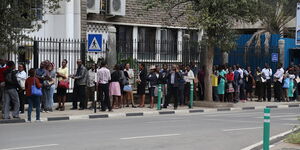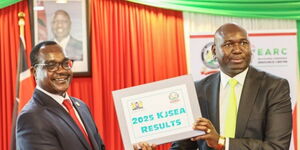President Joe Biden reiterated his position that the bottom-up model, is the best economic policy for the United States, the world's superpower.
On Tuesday, September 20, Biden expressed his frustration with the trickle-down economic model used by previous regimes saying it is dysfunctional in the current American set-up.
"I am sick and tired of trickle-down economics. It has never worked. We're building an economy from the bottom up and middle out," Biden wrote.
The outburst by the American president elicited reactions from Kenyans who resonated with the model. It was the basis of President William Ruto's campaign -one that centred around uplifting the low-earning citizens who are the majority.
Kenyans.co.ke analyzed the two models, with a view to understanding how they compare or contrast.
Population Substrata
Biden's model is similar to that of President Ruto but with a slight modification- the middle out. This is because while the population of its divided into similar social-economic strata - lower, middle and upper class - the distribution of its citizens is different.
In Kenya, the majority fall in the low-class category. The country has a weak middle class with most falling in the low-income middle-class category and while a handful comprises the upper class.
However, America has a stronger middle class - one that is not a salary away from poverty- and forms the most populated social class at 45 per cent.
Consequently, the same yet different models focus on the dominant social class; the low class in Kenya and the middle in America. Therefore, empowering these respective social classes financially will go a long way in improving the economy.
Unemployment Rates
According to the World Bank, the unemployment rate in Kenya stood at 5.7 per cent as of 2021. This is higher compared to America's 3.7 percentile.
This means that the dependency level is higher on Ruto's turf, with citizens unable to afford the a-dollar-a-day global levels. Its population grapples with putting food on its table.
While both Heads of States seek to create employment opportunities, it may be impossible to create formal jobs in Kenya, with over 800,000 graduates churned out to an already condensed job market.
Ruto's bottom-up model will hence focus on economically empowering the youth to become self-reliant through employment creation and entrepreneurship. This was captured in his manifesto; providing affordable loans and creating a free business environment.
In America, the economic and technological systems in place create both physical and virtual job opportunities. The unemployment issue can be tackled faster than that in the East African country.












